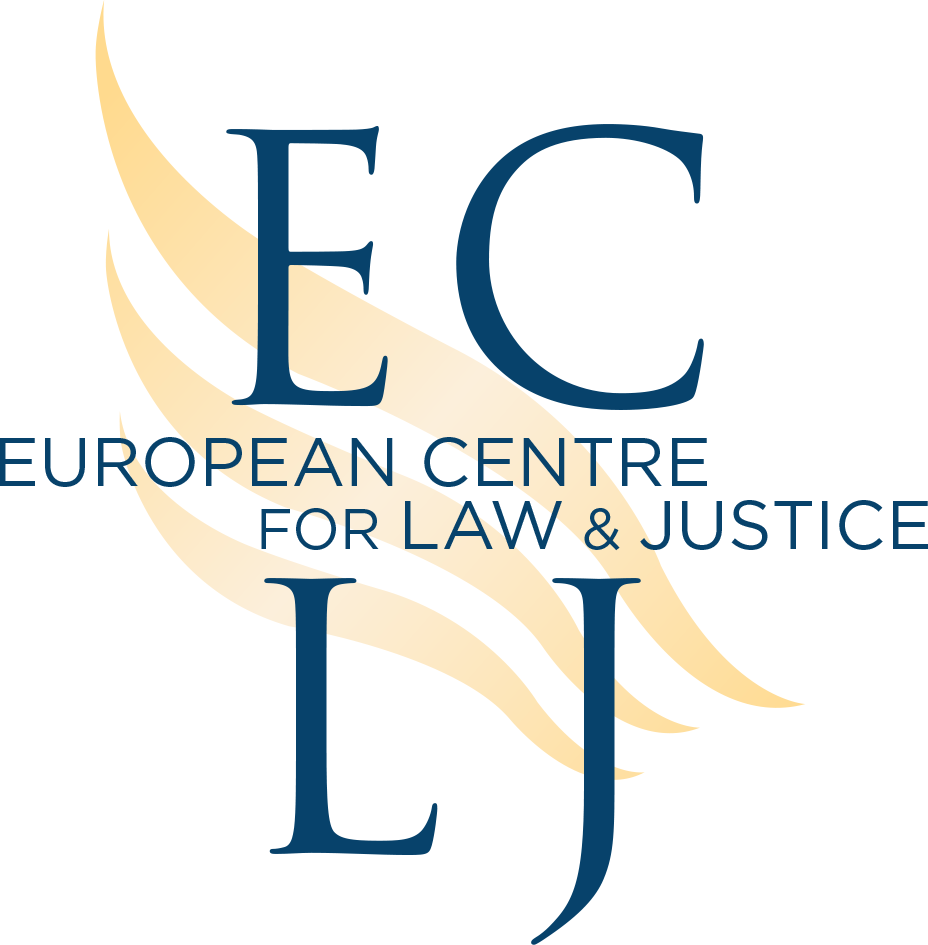On 25 March 2019, the hearing of the case One of Us v. Commission (Case-418/18) will be held before the Grand Chamber of the Court of Justice of the European Union (Luxembourg). Last legal step of a long institutional procedure before the final decision is made. The European Citizen’s Initiative (ECI) One of Us will have been the voice of almost two million European citizens up to the end of the procedure and will have tried to save a mechanism which today turns out to be illusory.
The One of Us initiative
This procedure was officially launched on 11 May 2012, when the European Commission registered the initiative One of Us making it possible for signatures to be collected and registered. This European Citizen’s Initiative (ECI) is an institutionalized form of democracy which, in principle, enables European citizens to suggest a law or a regulation for the European Union once they gather one million signatures with minimum thresholds reached throughout at least a quarter of the countries of the Union. Regarding this case, the purpose of the One of Us citizen’s initiative was presented as follows:
“The human embryo deserves respect to its dignity and integrity. This is enounced by the ECJ in the Brüstle case, which defines the human embryo as the beginning of the development of the human being. To ensure consistency in areas of its competence where the life of the human embryo is at stake, the EU should establish a ban and end the financing of activities which presuppose the destruction of human embryos, in particular in the areas of research, development aid and public health.”
The next step, which was the most difficult one, turned out to be a great success. Not only did the petitioners manage to gather the quorum of signatures required, one million; but they also made One of Us the largest European citizen’s initiative in the history of the Union. According to the European Commission’s official revised counting, 1.721.626 signatures were approved and accounted for.
In accordance with the rules, after a successful collection, the petitioners’ representatives were officially welcomed by the European Commission and the European Parliament on the 9 and 10 April 2014 in order to present their initiative in detail.
On 28 May 2014, the last day before the deadline, the Commission handed in its Communication, that is, its response to the initiative in which the measures it intends to implement appear.
In this response the Commission explained that the European legislation was, according to it, fully in compliance with human rights and in accordance with the instruments and the rules to which it is subject. The petitioners were therefore clearly told that the Commission did not intend to proceed with the initiative. By refusing to present the petitioners’ legislative project to the European Parliament for a debate and a vote, the Commission ruined the entire initiative as it was somehow “rejected” before getting to have any impact.
On 25 July 2014, the petitioners went to the European General Court to challenge the Commission’s decision. This referral arouse several technical legal issues as well as a fundamental matter of democratic principle: is the European Citizen’s Initiative’s mechanism an illusion?
The democratic issue of the case
The fundamental issue of the case driven by the One of Us Collective is the consistent interpretation of the mechanism. To use the term “citizen’s initiative” implies that the citizens do have the initiative to suggest a legislative project. It is normal and appropriate that the Commission controls the legal value and the feasibility of the initiative from the start of the procedure. Yet the Commission accepted several times to register petitions after examination but refused to proceed with them even though these petitions had fulfilled all the required conditions and had gathered over one million signatures. Regarding One of Us, the Commission accepted the petition, let the organizers gather over one million signatures to eventually reject the proposal. Up to now the Commission has registered and encouraged petitions already knowing before the collection of the signatures that if the latter succeeded, no specific follow-up action would be taken. This censorship power held by the Commission is the crux of the problem faced by the European citizen's initiative.
Regarding that subject, the General Court did not agree with One of Us and recognized the possibility for the Commission to refuse to proceed with an initiative even though the latter had fulfilled all the required conditions. The General Court did not take into account the legislative aim of the Regulation on the initiative and let the Commission’s discretionary power take precedence. The Commission can reject anything as long as it offers minimum justification. This judgement, far from saving or promoting the initiative, is weakening it down to uselessness. As a matter of fact, if one million signatures do not make the Commission share its power of initiative, then this mechanism is meaningless since it is no longer distinguished from an informal petition or from a simple letter addressing a request to the Commission.
The legal issues of the case
The Commission was in principle required by regulation No. 211/2011 to report its legal and political conclusions separately, which it did not do as it only presented one Communication. This requirement was eventually repealed by the European Parliament’s Resolution of 12 March 2019.
The General Court then considered that this Communication could be the subject of a legal control but only a limited one called that of “manifest error”. During the hearing before the Court, the Commission’s lawyer went as far as to ask for the exclusion of all European judicial control over the Commission’s Communication on the grounds that the latter did not directly lodge a complaint but just detailed a choice and a plan of action (or inaction) of the Commission.
Fortunately the Court did not follow the lawyer in such a conclusion as it would have implied that not only could the initiative be rejected without monitoring but also that such a rejection has no consequences for the petitioners and does not cause them any prejudice.
The General Court’s decision remains disappointing as the petitioners’ core argument relied on the case law of the European Court of Justice complying with European Regulations. If judgement C-34/10, Brüstle v. Greenpeace acknowledges the embryo’s human dignity, then it is inconsistent for the Commission to state it respects this dignity while funding research programs which destroy human embryos.
Therefore, and that is an argument One of Us used to file an appeal: even if the European judge were to settle for a monitoring of manifest error, he would find one as an embryo is not respected when it is destroyed.
This decision of the General Court, which the Grand Chamber might review, fundamentally calls into question the mechanism of the European Citizen’s Initiative, given the reasons described above and brings up the issue of the future of this “democratic tool”.
Questioning the mechanism of the ECI
The European Citizen’s Initiative is a democratic and quite recent mechanism of the European Union. Introduced as a means to “overcome the democratic deficit of the European Union”, the global idea of a Citizen’s Initiative was laid down in Article 11 of the Lisbon Treaty adopted in 2007. And it was not until 2011 that a Regulation was drafted in order to apply this mechanism and establish the specific conditions for the collection of signatures. The main issue was to institute a mechanism in which citizens would really launch the initiative, thus have the actual power to propose a legislation.
Article 20 of EU regulation No. 211/2011 of the European Parliament and of the Council of 16 February 2011 on the citizen’s initiative establishes this discretionary power held by the Commission, but wishes to keep it supervised:
“The Commission should examine a citizens’ initiative and set out its legal and political conclusions separately. It should also set out the action it intends to take in response to it, within a period of three months. In order to demonstrate that a citizens’ initiative supported by at least one million Union citizens and its possible follow-up are carefully examined, the Commission should explain in a clear, comprehensible and detailed manner the reasons for its intended action, and should likewise give its reasons if it does not intend to take any action.”
This “loophole”, which stands out in the writing of the European Citizen’s Initiative’s mechanism, was unfortunately epitomized in each successful initiative. So far, only four initiatives out of over 70 proposals have succeeded in gathering over one million signatures before the deadline. For each of these four cases, the Commission’s Communications were deemed deeply disappointing by the collectives and the practical proposals were virtually zero.
The first one, the initiative for a “right to water”, launched like One of Us in 2012, is the only one which can be satisfied with the Commission’s vague promises. There has however not been any specific and prompt legislative draft submitted in response to this initiative. A 21 March 2014 article in Le Monde was entitled “The subdued response of the European Commission to the first European Citizen's Initiative”, thus highlighting the weakness of the commitments made.
The second initiative entitled “Stop Vivisection” gathered 1.17 million signatures and asked the Commission: “To abrogate directive 2010/63/EU on the protection of animals used for scientific purposes and to present a new proposal that does away with animal experimentation.”
The Commission’s response indeed set out arguments but was a clear no:
“The Commission underlines that, for the time being, animal experimentation remains important for protecting human and animal health, and for maintaining an intact environment. […] The Commission therefore does not intend to submit a proposal to repeal Directive 2010/63/EU and is not intending to propose the adoption of a new legislative framework.”
After this decision, the Collective did not lodge an appeal to the European judge but rather before the European ombudsman. On 18 April 2017, Emily O’Reilly gave a formal reply in which she affirmed that “the Commission has complied with its duty to explain, in a clear, comprehensible and detailed manner, its position and political choices regarding the objectives of the ECI “Stop Vivisection”.” and she concluded by saying that there was “no maladministration by the European Commission.”
The last successful initiative to date regarded glyphosate and other products considered dangerous to health. The signatories asked the European Union to “Ban glyphosate-based herbicides, exposure to which has been linked to cancer in humans, and has led to ecosystems degradation.”
The collective provided several studies to support these allegations, but they apparently did not convince the Commission which prided itself on having other studies stating the opposite. The latter therefore replied in its Communication dated 12 December 2017 that: “the Commission considers that there are neither scientific nor legal grounds to justify a ban of glyphosate, and will not make a legislative proposal to that effect. […] Therefore, the Commission's decision to renew the approval of glyphosate (for 5 years) is fully justified.”
Following the countless rejections of initiatives and the disappointment brought about by the Commission’s decisions, the latter investigated and published a Report[1] on the application of Regulation (EU) No 211/2011 on the Citizen's Initiative.
One can notice that in this report the Commission acknowledged that “overall, a relatively limited debate and impact so far [were] generated by citizens’ initiatives” (page 2). That weak impact is probably connected with the fact that the number of initiatives decreased substantially within a few years. As there were still 51 proposals among which 20 refusals between April 2012 and March 2015, there only were 17 proposals among which 2 refusals between April 2015 and Mars 2018.
Yet, after having taken account of technical or administrative problems, the blindness which stands out in the European Commission conclusions is still surprising. Its conclusions, pages 15 and 16 state: “The Commission will continue to follow up on successful initiatives wherever appropriate.” That “wherever appropriate” sends a strong negative signal and brings out a formal acknowledgment that the Commission does not intend under any circumstances to share its legal initiative with the citizens.
In order to ratify this report, which apparently does not include the main issue of the problem affecting the mechanism, on 12 March 2019, the European Parliament adopted, a new legislative Resolution on the proposal for a regulation of the European Parliament and of the Council on the European citizens’ initiative.[2] Far from bringing the fundamental remedy to this mechanism, the Parliament focuses on the practical details of collecting signatures and lowering the minimum age for voting.
Worse still, in line with its strategy, this Resolution ratifies the Commission’s right of initiative by establishing the latter’s obligations, if it intends to follow up on the initiative. Indeed Article 15, paragraph 2, indent 2 asserts:
“Where the Commission intends to take action in response to the initiative, including, where appropriate, the adoption of one or more proposals for a legal act of the Union, the communication shall also set out the envisaged timeline for these actions.”
By reversing the phrasing as though following up on an initiative were an exception, the main principle being not to follow it up, the parliament deprives the citizens of the initiative and makes sure the Commission’s monopoly is maintained.
The judgment of the Grand Chamber of the Court of Justice of the European Union in the case One of Us, which will not be rendered before the end of the year, is therefore the last hope of saving the citizen’s initiative…
[1] European Commission, Report on the application of Regulation (EU) No 211/2011 COM(2015) 145 final, 31 March 2015.
[2] COM(2017)0482 – C8-0308/2017 – 2017/0220(COD)














